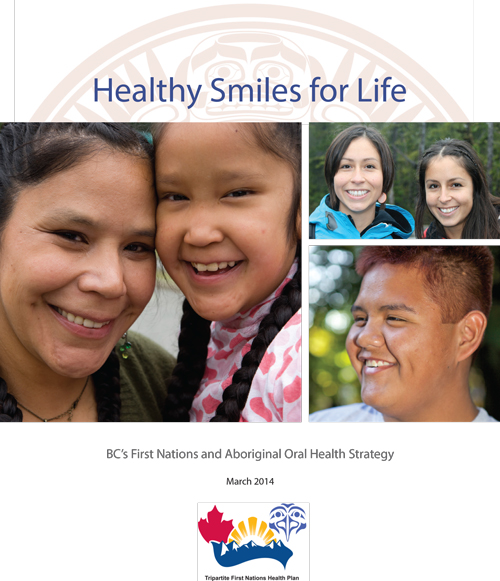Official Launch - Healthy Smiles for Life:
BC’s First Nations and Aboriginal Oral Health Strategy

The First Nations Health Authority is happy to announce its involvement in the partnered development and launch of – Healthy Smiles for Life: BC's First Nations and Aboriginal Oral Health Strategy.
Oral Health was identified as a key area of focus by the Transformative Change Accord: First Nations Health Plan and the Tripartite First Nations and Aboriginal Maternal Child and Family Health Strategy Area. Promoting oral health and preventing cavities and other related dental issues for children begins at birth and has lasting impacts on their healthy development and long term health and wellness outcomes. Related to the First Nations Perspective on Wellness – oral health is understood to have a tremendous impact on the overall mental, physical, spiritual, and emotional condition of the individual.
Healthy Smiles for Life was developed with the leadership of the Ministry of Health in collaboration with First Nations Health Authority, Health Canada and Regional Health Authorities in relation to three pieces of earlier work found on the FNHA and Ministry of Health websites:
• Environmental Scan of Oral Health Services for First Nations and Aboriginal Children 0-7 years
• Oral Health Resource Materials
• Dental Survey of Aboriginal Kindergarten-Aged Children 2009-2010
Healthy Smiles for Life is a go-to guide for public health and community efforts to improve the oral health of First Nations and Aboriginal children aged 0-18 and their caregivers in BC. This strategy can be a helpful resource to inform public health and community planning, policy development and program implementation within regions and communities.
Healthy Smiles for Life identifies six strategic directions for ongoing collaborative efforts:
2. Prevention and Identification of Caries Risk
4. Leadership and Collaborative Action
5. Surveillance, Monitoring and Evaluation
Healthy Smiles for Life identifies five principles to guide collaborative work for improving oral health for First Nations and Aboriginal children in BC:
• Health Equity. Create equal opportunities for good oral health for all, and reduce disparities in oral health among population groups.
• Cultural Competence and Responsiveness. Ensure that oral health care providers are culturally competent, and provide culturally responsive oral health promotion and prevention services.
• Holistic Health and Wellness. Promote oral health as part of a holistic health and wellness strategy. Shift from a sickness model to a wellness model.
• Healthy Children, Healthy Families and Healthy Communities. Recognize that Elders and other community members play an important role in the health of First Nations and Aboriginal children. Promote collective community efforts to foster equity, dignity and well-being for children and their families.
• Working Together. Establish strong communication and partnerships between First Nations and Aboriginal communities and public health oral health care providers. Foster community channels for reaching children and their caregivers and families.
Next steps in relation to Healthy Smiles for Life include action planning at provincial, regional, and local levels to bring this strategy to life. It is hoped that this action planning will outline activities, timelines, leads and milestones within current and new funding and staffing contexts both provincially and regionally. Commitment and action is required to support improved oral health care and outcomes for First Nations and Aboriginal infants and children – a legacy that will continue to improve the health and wellbeing of future generations.
Learn More:
*This document is only available electronically. No print copies have been produced.

